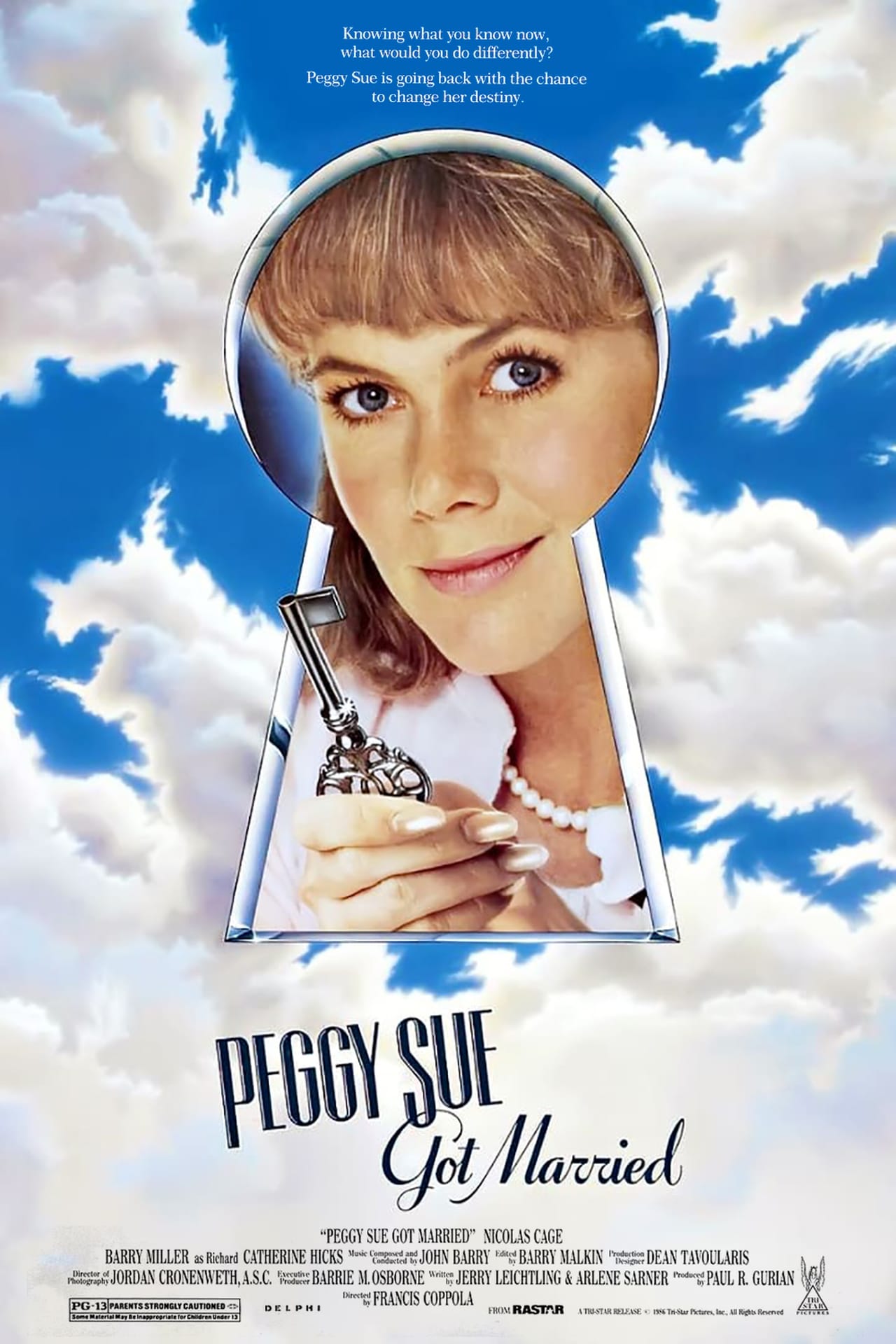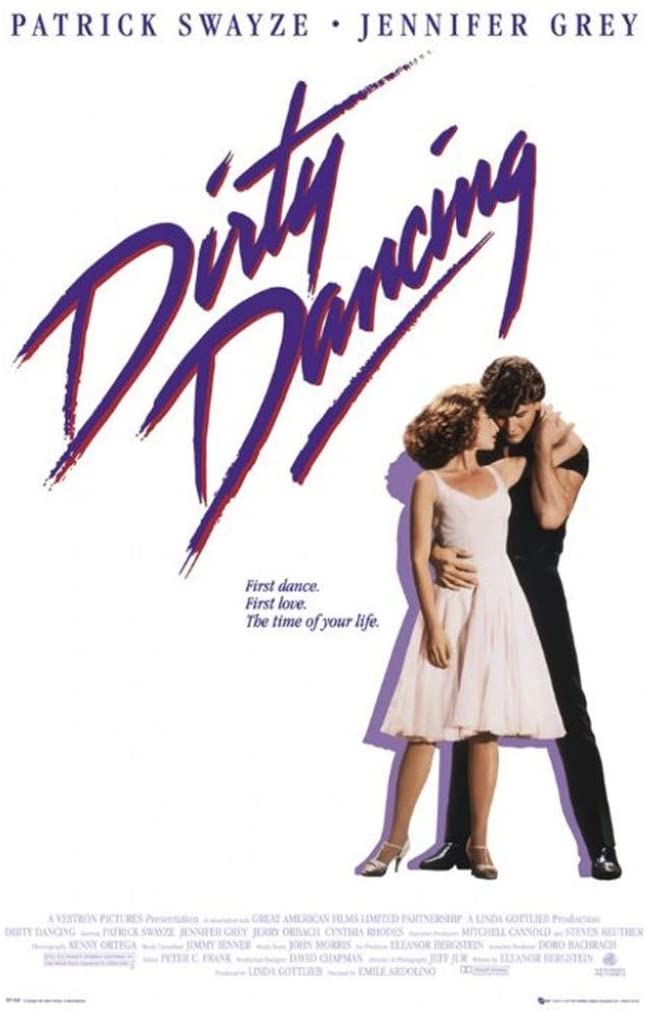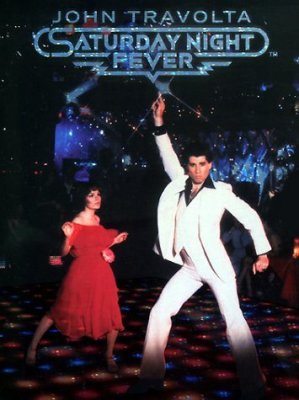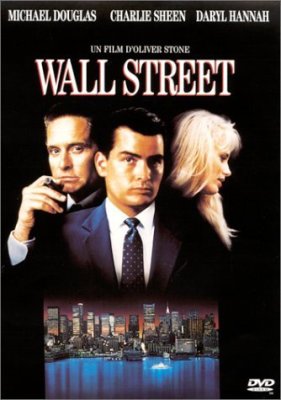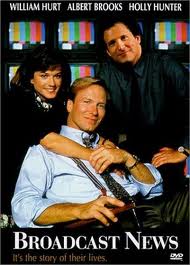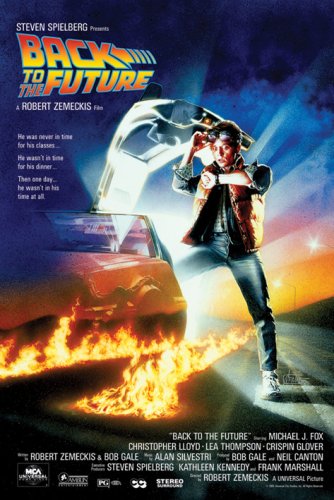Sorry, Charlie — ‘Peggy Sue’ deserves better than the town buffoon
More than anything, “Peggy Sue Got Married” loves its 1960s cars.
That’s a departure from its unofficial cousin, “Back to the Future,” which could show us all kinds of 1950s hot rods but prefers a 1980s vehicle.
Forget the ending. “Peggy Sue” is tragedy. It’s billed as “comedy-drama.” It is indeed funny. But in the same way “Back to the Future” reminds us that we’re all meant for our time, “Peggy Sue” informs us that our brains and our biology will never be in sync. The latter peaks in our 20s or maybe 30s, the former, maybe not till the very end. The things we need to know at 17 or 27, we might not realize until we’re 37, 57, 77, 97. The signature quote is from Peggy, to a friend at her class reunion: “If I knew then, what I know now, I’d do a lot of things differently.”
“Peggy Sue” is a quirky film that also falls under the “fantasy” label. That term opens up a wide range of interpretations, which can prompt artists to disagree. The backstory of “Peggy Sue” indicates trouble. It was going to be a Debra Winger project. Winger’s vision reportedly clashed with that of initial director Jonathan Demme, who quit. Winger then got her friend Penny Marshall hired to direct, but Marshall reportedly clashed with either the writers and/or the producers, so she either “quit” or was “fired” over differences with writers (Wikipedia), or the producers thought the movie too big for a first-time director (Internet Movie Database). Or, as the Los Angeles Times put it, she simply “lost the job.” (See how convoluted Hollywood stories can get?) Producers brought in Francis Ford Coppola (no one denies that), hoping Winger would continue — but Winger experienced serious back problems that apparently forced her to drop out. A producer bemoaned “a lot of rocky roads” on the project.
The ’70s were the decade for Francis Coppola. The ’80s were the decade for Kathleen Turner. She was 32 when “Peggy Sue” was released, the perfect age for a character roughly 42 years old who has to inhabit a teen’s body. A devastating siren in “Body Heat” and other films, Turner is somehow right at home in this nostalgic tale, perhaps because she didn’t make the mistake (unlike her co-star) of overthinking it. “I never really studied acting. People talk about these different techniques — Meisner, all this stuff. I don’t know what they’re talking about most of the time,” Turner said in a 2018 interview. “My acting school was acting. ... I just did it. In fact, the master classes I do, my course is called Practical Acting. You shut up and do it.”
Time travel proved massively popular in the ’80s. Aside from “Back to the Future,” there were “The Terminator” and “Field of Dreams.” The trip to the past in “Peggy Sue Got Married” is not as sexy as in those other films, but it has other parallels going for it. “American Graffiti” and “Dirty Dancing” are also appealing films released after the ’60s about ’60s high school students. Some reviewers of “Peggy Sue” mention “It’s a Wonderful Life,” the notion of a character knowing how life will, or could, turn out. And there is “The Wizard of Oz,” in which we are introduced to the protagonist and the supporting actors, then the protagonist enters a fantasy world in which the protagonist is the same person but the supporting actors play themselves in different form, only to have the protagonist wake up and be greeted by the original supporting actors at her bedside.
Where did “Peggy Sue Got Married” come from? The original screenplay was written by husband-and-wife team Jerry Leichtling and Arlene Sarner. Neither is evidently famous enough to merit a Wikipedia page. Remarkably, Google searches reveal no interviews or articles about the origins of this script. There is some background in a 2007 review by the critic Emanuel Levy, who wrote, “Reportedly, writers Jerry Leichtling and wife Arlene Sarner scripted ‘Peggy Sue’ before ‘Back to the Future.’ In an interview, they said they wanted to explore the notion that ‘We alone are responsible for our destiny.’”
Leichtling and Sarner ultimately wrote few films. However, one was “Blue Sky,” which landed an Oscar for Jessica Lange. “Peggy Sue Got married” brought Turner her lone Oscar nomination. She lost to Marlee Matlin of “Children of a Lesser God.”
If it’s true that “Peggy Sue” was being written before “Back to the Future,” that is very unfortunate timing. Hardly any reviews of the former exist without mentioning the latter, often in the first or second paragraph. “Future” was released in July of 1985. At that time, Francis Coppola still didn’t know who would play Peggy. It’s hard to imagine the “Peggy Sue” filmmakers not being aware of “Future” and at least some of its scenes or plot, though that is not to say that any of it is lifted. Among the comparisons: Both movies involve a character reaching back into the past to solve a current problem. Both protagonists must connect with a genius type of the past who will understand they are from the future. Both have to straighten out their present-day problems by straightening out high school kids from the past. Each film’s climax turns on a musician performing at a crucial moment. Neither movie is interested in the weightier issues of history. Peggy Sue should certainly tell classmates, “Don’t let JFK go to Dallas in November 1963” and “Don’t let Dr. King go to Memphis in April 1968” and “Write your congressman about this Vietnam thing.” It’s perhaps disheartening that Peggy Sue is more interested in the development of pantyhose than these things, but she’s not a social scientist, she’s a woman getting a divorce from the town flake. Marty McFly, on the other hand, is precluded from delving into these topics because Doc insists (without much proof) that knowing about the future will only make things worse.
And no movie about high school kids, now or then, can resist the battleground of the cafeteria. A social order takes place not terribly different than the TV show “Survivor.” Get with the right group, you can go places; sit alone, and prepare to be bullied off the island.
“Peggy Sue” is basically an all-white movie. “Back to the Future” has African American characters, though they are given dubious roles that should’ve been questioned. “Peggy Sue” and “American Graffiti” and “Grease” are all visions of earlier generations of high school that may not reflect reality but that no one seems to hold against them.
The worst part of “Peggy Sue Got Married” unfortunately is the first 15 minutes. Those early scenes require considerable, unnatural speechmaking to bring viewers up to speed on Peggy’s problems. So many characters offer descriptions and anecdotes in soundbites, you’re going to need the rest of the movie to figure out what they’re talking about. Coppola spurns flashy scenes that might take Peggy Sue to 1960. Her entry, via a blood drive of all things, is flat as a pancake. Vincent Canby called the movie’s approach to entering the time warp, and returning, “lame.”
Once she’s in 1960, Peggy probably should be as serious as Dorothy in “Oz.” She’s anyting but. This is a refreshing twist, though, as Turner seizes on the comedy potential. Turner plays Peggy as someone who believes she’s in a dream, that it’s not real, and that at her (real) age, parents and teachers are no longer individuals to be minded. She finds alcohol at home and takes a couple drinks. Her dad asks, “Are you drunk?” She says, “Uh, just a little. I had a tough day.”
Peggy’s mother asks if Peggy and Charlie had a fight. Peggy says, “Sort of.” Her mother says, “About what?” “House payments,” Peggy replies.
Peggy doodles through math class. “Well, uh, Mr. Snelgrove,” she tells the disapproving teacher, “I happen to know that in the future, I will not have the slightest use for algebra, and I speak from experience.”
Peggy is not, at least in her time-travel persona, beholden to the truth. Is piracy fair game for time travelers? She will hand Charlie the music and words to “She Loves You” and tell him twice with a straight face, “I wrote a song for you.” (Had she given him a couple more, she definitely could’ve improved her future.)
There are other effective, though serious, moments of Peggy reconnecting with her late grandparents. After a phone call, she explains to her mother she is shaken because, “I dreamed that Grandma died.” Turner told Oprah Winfrey that the scene “gets me every time.”
Roger Ebert, who gave the movie 4 stars and ranked it 9th best of 1986, writes that “the convention is that the heroine looks adult to us, but like a teenager to the other characters.” This aligns the movie’s concept with Warren Beatty’s “Heaven Can Wait” of 1978. Beatty’s Joe Pendleton should cease looking like Warren Beatty once he enters Leo Farnsworth’s body. But then we’d be seeing an old man instead of Warren Beatty. So the artistic license allows viewers to see Beatty/Joe while all the other characters see Leo Farnsworth. It takes some getting used to — if you even stop and think about it — but not as much as you might think.
There are occasional sun-splashed scenes in “Peggy Sue Got Married,” but Coppola’s cinematographer, Jordan Cronenweth, when he’s not showing us cars, opts often for arthouse-style lighting contrasts through classroom and bedroom and basement windows. Perhaps that has something to do with the production design of “The Godfather” legend Dean Tavoularis. It’s a style that doesn’t always feel like it’s in the right movie. But it worked. Cronenweth got an Oscar nomination, one of the film’s three. He lost to Chris Menges, “The Mission.” (Theadora Van Runkle got the third, for costumes, losing to Jenny Beavan, John Bright, “A Room with a View.”)
Also maybe not in the right movie is Jim Carrey, in an early role. He’s something like the Biff character of “Future.” If he had designs on Peggy and attempted to block her relationship with Charlie, there could be drama. But he’s never given a chance to be a villain. His shtick is more obnoxious than funny. He’ll figure it out later.
On the other hand, Barry Miller, who played the nerdy outcast in “Saturday Night Fever,” is the nerdy kid again. He’s needed. This time, he’s actually smart. In “Fever,” he gets so depressed, he apparently takes his own life. In “Peggy Sue,” he’s so depressed that he invents computerized reading devices and makes a fortune. (See, the ’80s vs. the ’70s.)
Sofia Coppola, who does not resemble Turner in the slightest, is a curious choice to play Peggy’s sister. But that casting call is far less consequential than her dad’s choice of another relative for the crucial role of Charlie Bodell.
Nicolas Cage, a great film actor but one of the most polarizing actors of all time, uncorks a disaster for the ages here. Who knows how in the world he was compelled and authorized to speak as though he’s been sucking helium. The buck teeth dentures and aging-Jett-Rink-look-from-“Giant” are curious also. Vincent Canby said Cage resembles “Peter Cushing playing Dr. Frankenstein.” That’s not a bad call. Turner obviously wasn’t happy and said so in her autobiography and in the process, actually made seemingly off-the-cuff statements about Cage that prompted him to sue, and win.
Cage’s performance still rankled as recently as 2018, when Turner unloaded in an interview: “It was tough to not say, ‘Cut it out.’ But it wasn’t my job to say to another actor what he should or shouldn’t do. So I went to Francis. I asked him, ‘You approved this choice?’ It was very touchy. He was very difficult on set. But the director allowed what Nicolas wanted to do with his role, so I wasn’t in a position to do much except play with what I’d been given. If anything, it only further illustrated my character’s disillusionment with the past. The way I saw it was, yeah, he was that a------.”
In Cage’s defense, a potential rival character, Michael Fitzsimmons (played by Kevin J. O’Connor, who gets the “introducing” tag in the opening credits), the guy who’s adamant that Hemingway is overrated, is about as equally over the top, but that’s OK; Michael isn’t the key to Peggy’s happiness.
That Turner managed to convince Oscar voters that Peggy is interested in Charlie and needs him in order to clarify and improve her life must rank as one of the greatest acting jobs in history. There’s not an ounce of chemistry between the two stars, but there’s enough sweetness in some of Turner’s realizations that people bought it. Gene Siskel called it the 5th-best film of the year and actually said about Cage, “I can’t say enough about his performance.” In any case, Cage redeemed himself 14 years later in yet another movie of this subgenre, “The Family Man.”
There’s apparently deliberate ambiguity in the ending of “Peggy Sue Got Married” as to whether Peggy really did go back in time. A Mylar balloon in a hallway suggests no, but the dedication of a book suggests yes. The secret to “Peggy Sue Got Married” is not whether someone remains married. It’s those everyday, long-forgotten moments that we’d give anything to share with our late grandmothers again.
3 stars
(March 2021)
“Peggy Sue Got Married” (1986)
Starring
Kathleen Turner
as Peggy Sue ♦
Nicolas Cage
as Charlie Bodell ♦
Barry Miller
as Richard Norvik ♦
Catherine Hicks
as Carol Heath ♦
Joan Allen
as Maddy Nagle ♦
Kevin J. O’Connor
as Michael Fitzsimmons ♦
Jim Carrey
as Walter Getz ♦
Lisa Jane Persky
as Delores Dodge ♦
Lucinda Jenney
as Rosalie Testa ♦
Wil Shriner
as Arthur Nagle ♦
Barbara Harris
as Evelyn Kelcher ♦
Don Murray
as Jack Kelcher ♦
Sofia Coppola
as Nancy Kelcher ♦
Maureen O’Sullivan
as Elizabeth Alvorg ♦
Leon Ames
as Barney Alvorg ♦
Randy Bourne
as Scott Bodell ♦
Helen Hunt
as Beth Bodell ♦
Don Stark
as Doug Snell ♦
Marshall Crenshaw
as Reunion Band ♦
Chris Donato
as Reunion Band ♦
Robert Crenshaw
as Reunion Band ♦
Tom Teeley
as Reunion Band ♦
Graham Maby
as Reunion Band ♦
Ken Grantham
as Mr. Snelgrove ♦
Ginger Taylor
as Janet ♦
Sigrid Wurschmidt
as Sharon ♦
Glenn Withrow
as Terry ♦
Harry Basil
as Leon ♦
John Carradine
as Leo ♦
Sachi Parker
as Lisa ♦
Vivien Straus
as Sandy ♦
Morgan Upton
as Mr. Gilfond ♦
Dr. Lewis Leibovich
as Dr. Daly ♦
Bill Bonham
as Drunk ♦
Joe Lerer
as Drunk Creep ♦
Martin Scott
as The Four-Mations ♦
Marcus Scott
as The Four-Mations ♦
Carl Lockett
as The Four-Mations ♦
Tony Saunders
as The Four-Mations ♦
Vincent Lars
as The Four-Mations ♦
Larry E. Vann
as The Four-Mations ♦
Lawrence Menkin
as Elderly Gentleman ♦
Dan Suhart
as Chinese Waiter ♦
Leslie Hilsinger
as Majorette ♦
Al Nalbandian
as Lodge Member ♦
Dan Leegant
as Lodge Member ♦
Ron Cook
as Lodge Member ♦
Mary Leichtling
as Reunion Receptionist ♦
Anna Ferguson
as Nurse
Directed by: Francis Coppola
Written by: Jerry Leichtling
Written by: Arlene Sarner
Producer: Paul R. Gurian
Executive producer: Barrie M. Osborne
Music: John Barry
Cinematography: Jordan Cronenweth
Editing: Barry Malkin
Casting: Pennie du Pont
Production design: Dean Tavoularis
Art direction: Alex Tavoularis
Set decoration: Marvin March
Costumes: Theadora Van Runkle
Makeup and hair: Kathryn L. Blondell, E. Thomas Case, Susan Kalinowski, Candida Conery, Frank Griffin, John Rizzo
Unit production manager: Barrie M. Osborne
Post-production supervisor: Kerry Orent
Stunts: Steve Holladay
